Ranking in Google Top 10 Results is GONE | Here’s How to Combat it in The Modern Age
Google is King! But, have you noticed how busy the top of Google is getting?
Google organic results are getting pushed further and further down the page.
The days of finding success in top 1-10 rankings are gone!
And as of late, you’ve likely seen boxes like these taking over:
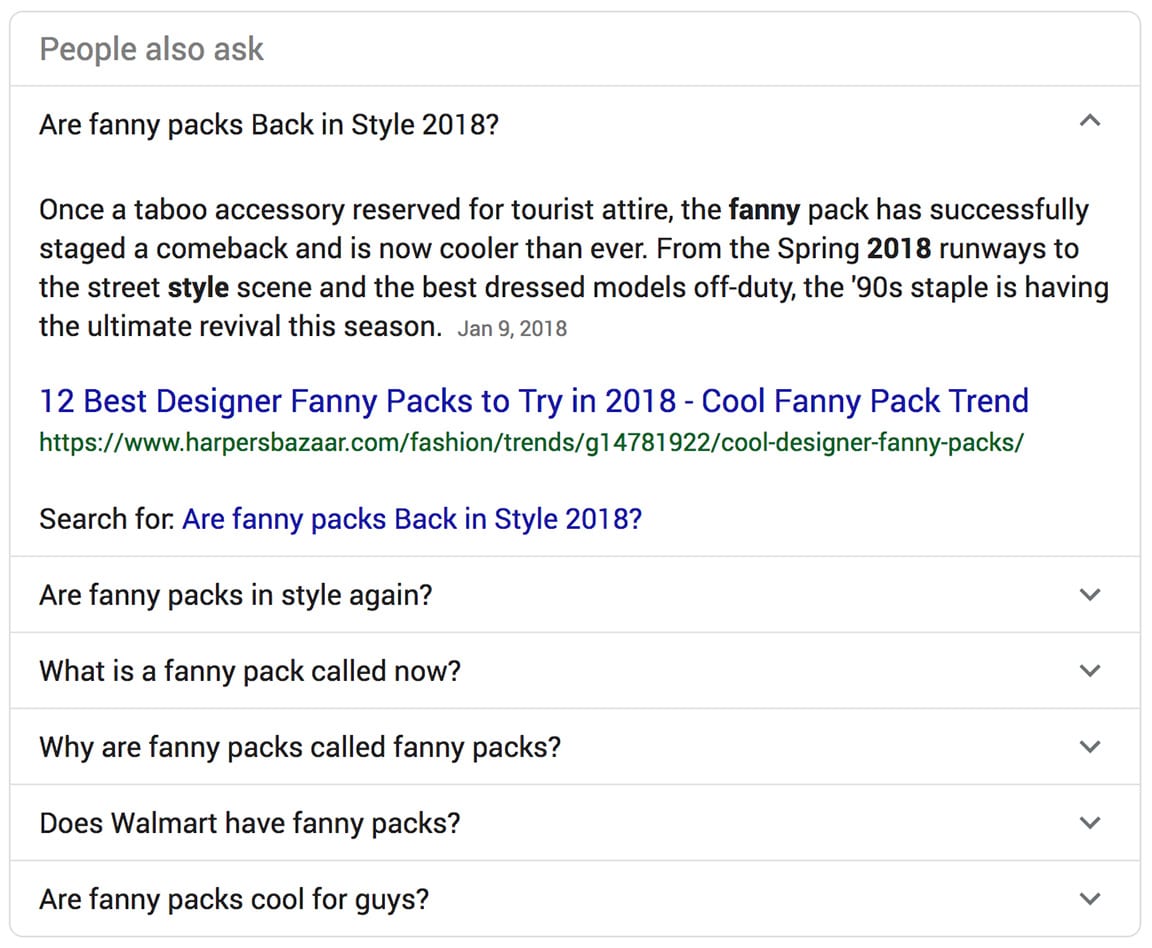
These boxes are called Featured Snippets and they are only way to the top of the search results.
Featured snippets are dominating Google’s search results, and it’s important for online lead generators to understand what they are and how to optimize for them.
Featured snippets and SERP features may be one of the biggest changes to how traffic flows through Google in the last few years, and we expect this to increase.
In this guide, we’ll walk you through everything you need to know to take advantage of featured snippets for SEO.
What Are Featured Snippets in Google?
A featured snippet is a Google search result that appears at the top of the search results which contains content that Google thinks addresses the searcher’s query.
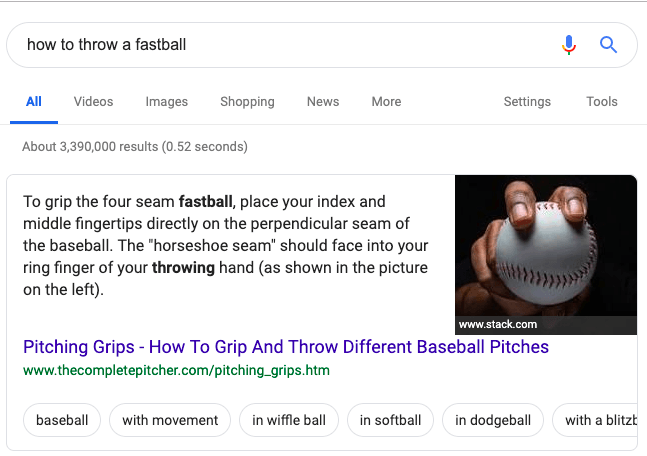
Google extracts this content from a page in its index. Each featured snippet from Google includes:
- Content relevant to the query
- Page title
- URL of the page where content resides
- An image from Google’s image search
Featured snippets come in a few different types:
Kinds Of Featured Snippets
Featured snippets present their content in 4 ways:
1) Paragraph Snippets
The first type of snippet is as a paragraph or blurb of text, like this:
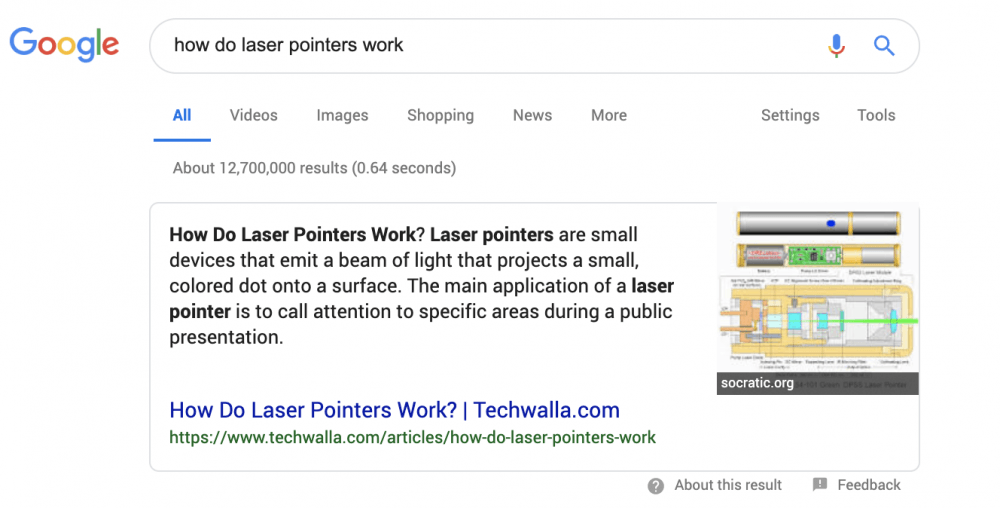
Interestingly enough, the image Google used in the featured snippet will not always be from the page used for the rest of the snippet content.
Some featured snippets, as seen above, include search terms that users can use to edit their search to find even more featured snippets. Clicking on any one of these will append that word or phrase to the original keyword and show the featured snippet for that search:
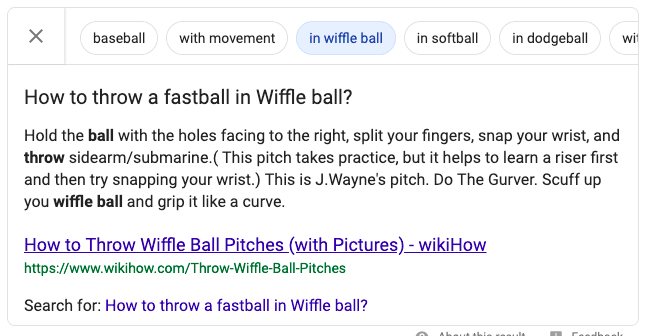
2) Featured Snippet Lists
The second snippet is as a list, either numbered or bulleted:

3) Featured Snippet Tables
The third snippet format is as a table:
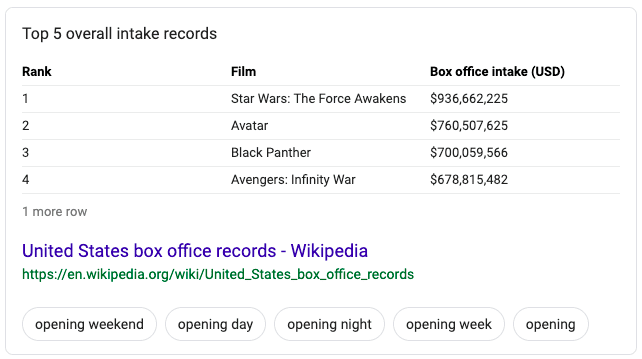
Note: In the example above, the data shown in the featured snippet table is shown in a table by Wikipedia. However, that is not a prerequisite for Google selecting a page for a table featured snippet. It will sometimes reformat the data found on the page into a table on its own.
4) Featured Snippet Video
As a fourth type is when Google links to a YouTube video with a suggested time stamp of where you can locate the answer to your question:
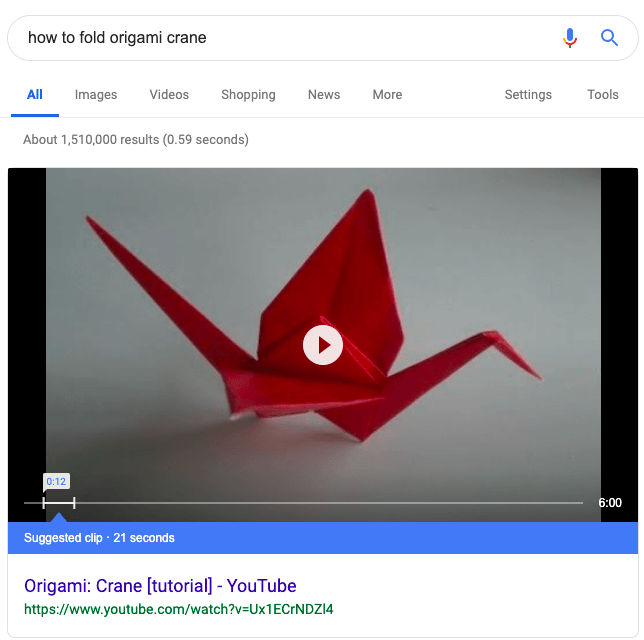
The snippets featuring YouTube videos are typically labeled as “suggested clips” and are only available to YouTube videos.
Featured Snippets And “Quick Answers” Are Not The Same
There is another kind of SERP (search engine results page) feature that looks a lot like the featured snippet and serves a very similar function but is actually something completely different.
This feature is often called a “quick answer” or “fast answer” box because it provides an answer to the user’s query quickly — right in the search results. However, it does not link out to the source of the information because that information comes from Google’s Knowledge Graph.
These fast answer boxes can serve functions such as question answering:
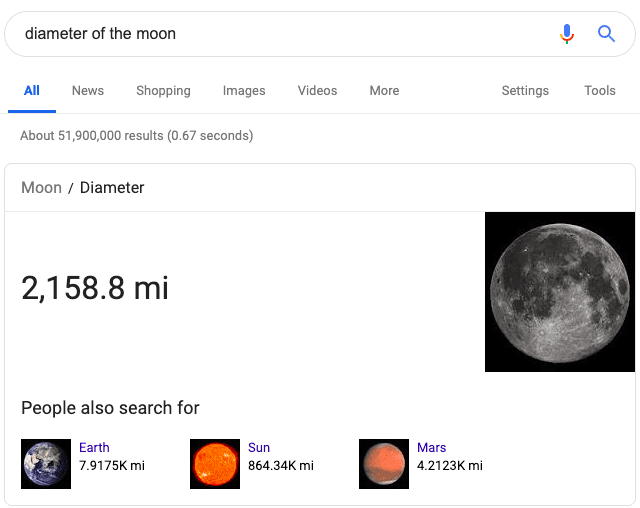
Calculating:
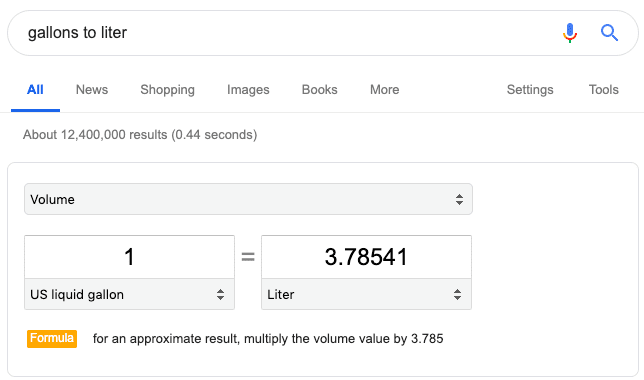
Or forecasting the weather:
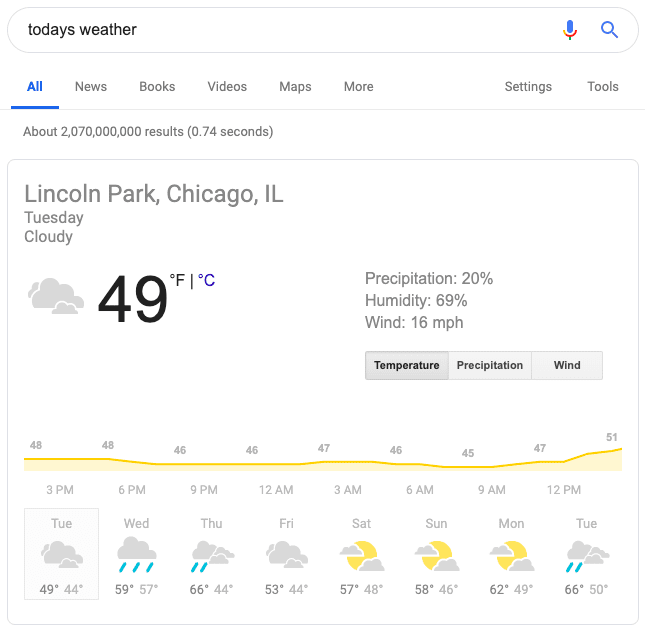
The distinction between a featured snippet, which displays content from a web page, and the fast answer box, which doesn’t is important to keep in mind because you can earn a featured snippet for your content, but not a fast answer box.
Featured Snippet Stats:
From a study by SEMrush:
- 41% of questions asked of Google show a featured snippet
- Paragraph featured snippets have an average of 272 characters per snippet
- 23% of comparison keywords result in featured snippets
- Only 7% of generic keywords show a featured snippet
- 99% of snippets for question keywords are paragraph keywords except “how” questions. 52% of “how” keywords with featured snippets show list snippets
- List snippets max out at 8 items
- 70% of featured snippet sources use HTTPS
From a study by Ahrefs:
- 31% of featured snippets use content from the keyword’s top-ranked page
- Featured snippets get about 8% of clicks from search results
- 99% of pages in featured snippets appear on the first page of Google search results
- 54% of keywords with featured snippets have a monthly search volume less than 50
- 2% of keywords with featured snippets contain the word “recipe”. An equal amount contain the word “best”
From a series of studies by STAT Search Analytics:
- 4% of featured snippets appear below another SERP feature
- 86% of featured snippets appearing below another SERP feature are below Google Shopping results
- 99% of featured snippets will feature between 1 and 3 URLs over a 5-day period
- 68% of featured snippets didn’t change at all over a 5-day period
- 5% of featured snippets disappear and/or reappear in that same time frame
- 25% of feature snippets appear for queries made up of 6 or more words
- URLs appearing in featured snippets have 12.5% more social shares than the other top results
The Benefits of Featured Snippets
The main benefit of earning a featured snippet is that content gets more clicks when it’s included in a featured snippet. As found by Hubspot, content with a featured snippet has a 2x higher CTR in search results than content that’s not shown in a featured snippet.
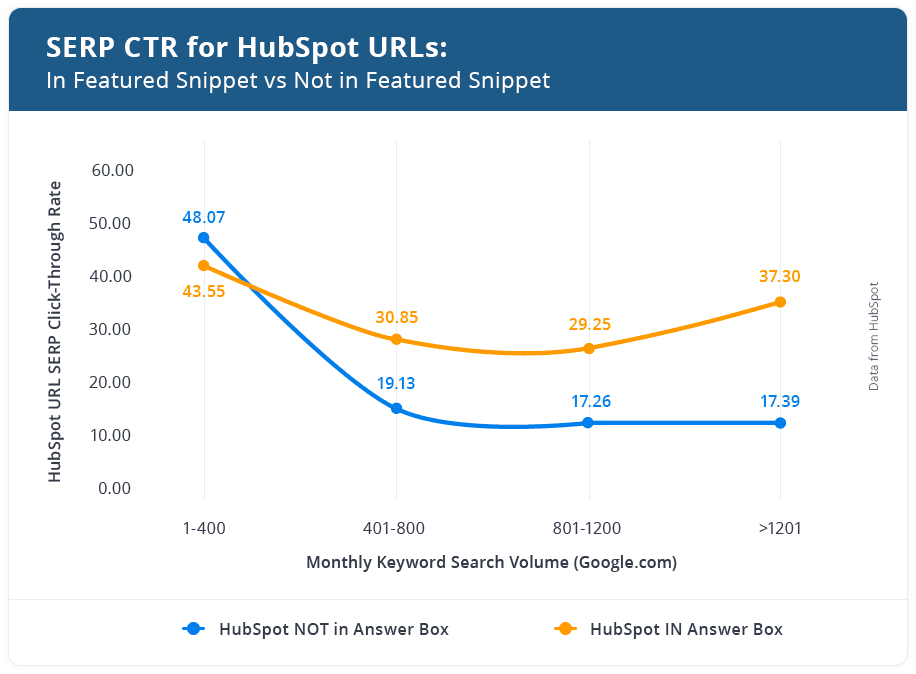
And more search traffic is why we’re all here, isn’t it?
Beyond “just” traffic to your website, appearing in featured snippets can increase awareness of and trust in your brand or website. Not only is your name appearing right at the top of search results, but it’s also being put forth by Google as the definitive answer to the user’s question.
That’s a strong indicator that your content is authoritative and trustworthy.
Earning Featured Snippets
Now that we know what a featured snippet is, some data about how prevalent they are and how they work, and have seen their benefits it’s time to get into how to go about claiming featured snippets for your own content.
When trying to earn featured snippets for your content, take a 2-pronged approach:
- Pick the right keywords. As we covered above, we know certain words and phrases (“how”, “recipe”, “best”, etc.) are more likely to show a featured snippet than others.
- Optimize your content. There are no hard and fast rules regarding how to optimize content for featured snippets. However, there are some steps you can take, which we’ll get into below, in order to help Google better understand how relevant your content is to a question.
Picking Keywords For Featured Snippets
There are a few places you can look to find the keywords you should target to earn featured snippets for your site.
The first is to check for the easiest opportunities you have: keywords you already rank highly for that are likely to trigger a featured snippet. For this, turn to your Google Search Console (GSC) account.
Open up the “Search results” performance report and filter the data by queries that contain those question words:
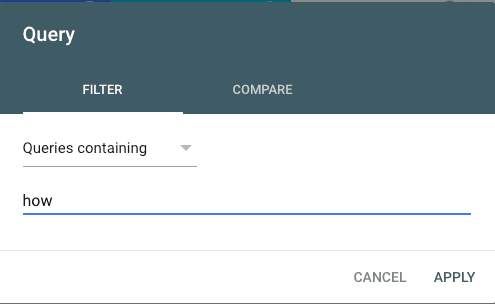
Note that due to limitations in GSC’s interface, you’ll have to do this one question word at a time.
Sort these queries by position from highest ranking to lowest ranking.
The questions your site already ranks for in the top 10 are your best opportunities to claim featured snippets and the opportunities for you to maximize the benefits of the snippets you do earn.
Then, go back to your keyword research and pick out the informational intent keywords you’re targeting.
Take this list of keywords and plug them into a good keyword tracking or keyword research tool that includes SERP feature data. WooRank’s Keyword Tool lists the SERP features detected for a tracked keyword:
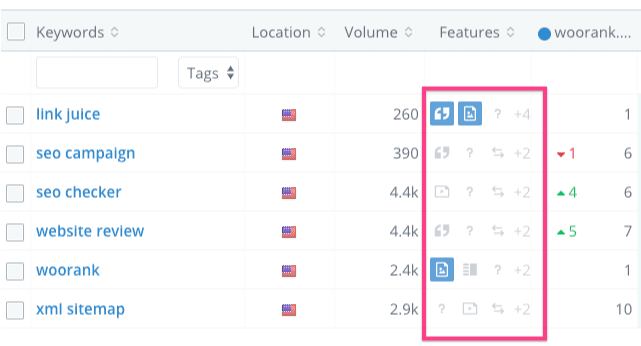
As you can see from the example above, there’s a prime opportunity to claim a new featured snippets: the “seo campaign” keyword.
This keyword is great because:
- The tracked site already ranks in the top 10 results, so it’s eligible for a featured snippet
- The site doesn’t rank at the top, so a featured snippet is a great way to siphon off some of that traffic from a competitor
- It’s an informational intent keyword
- It triggers a featured snippet that, quite frankly, isn’t a very good answer to the intent behind the query:

If you don’t identify any informational intent keywords that trigger a featured snippet, don’t worry!
While you can’t control whether or not a featured snippet appears, you can optimize your content for these keywords in a way to set yourself up to claim a featured snippet if Google ever decides to show one.
How To Optimize For Featured Snippets
So once you’ve picked a good keyword to target, or find an existing keyword that you can earn a snippet for, it’s time to optimize your content.
Interestingly, based on HubSpot’s data about featured snippets, a site’s on-page SEO plays a much bigger role than backlinks. Once you get your page into the top 10, it’s all about optimizing your content for answers.
How do you optimize for answers?
Follow these general guidelines to make it easier for Google to find and understand how your content answers the questions:
- Use the questions in a header (h1, h2, h3, etc.).
Ideally, use the question as the h1 content. - Use the <p> tag.
For paragraph snippets, put the content you want to appear in the snippet in the <p> tag that directly follows the header tag containing the question. For a list snippet, use each bullet point as a separate header (step 1, step 2, step 3, etc.) or include a summary with a bullet-point at the beginning of the page. Such as a table of contents. - Make your answer complete, but concise.
Remember, paragraph snippets have an average of 272 characters (between 50 and 60 words). - Answer similar, supporting questions later in the content.
So if we’re targeting the “seo campaign” keyword, we’d want to answer questions such as “what is an seo campaign?”, “how to do an seo campaign” and “do I need an seo campaign”. Doing this can help you can claim featured snippets for these queries as an added bonus. - Consider using structured data markup for lists and tables.
Featured snippets don’t seem to rely too much on structured data, but anything you do to help Google understand your content is good practice. - Make sure to write your content logically.
For lists, follow a logical structure. For paragraphs, don’t use convoluted or unnatural language in an attempt to add relevant keywords. As we see with the “seo campaign” example, keyword use in the snippet content doesn’t play much of a role here.
So for anyone looking to increase their site’s visibility in search results, the best advice would be to focus on creating content that really answers the users’ questions and then run a link building campaign to get that content onto Google’s first page.
Tracking Featured Snippets for Your Site
While working on claiming featured snippets for your content you should also be tracking the existing featured snippets for your site and keywords.
Tracking featured snippets (and other SERP features) benefits you in a few ways:
- Understand how your site appears in search results. SERPs with lots of features can push even the first result way down the page. Knowing what search results look like can help you decide which keywords are right for your site.
- Learn about how Google views the intent behind a particular query. Don’t just guess when trying to decide how to target keywords. Use the presence of featured snippets to plan your content.
- Find where and how you can jump ahead of your competitors. The higher you rank in Google results, the harder it is to move even higher (it’s easier to go from page 3 to page 4 than position 4 to position 5). However, grabbing position 0 with a featured snippet can be a short cut to beating your rivals.
As we mentioned before, WooRank’s Keyword Tool gives users the ability to see which keywords have featured snippets (and other SERP features):
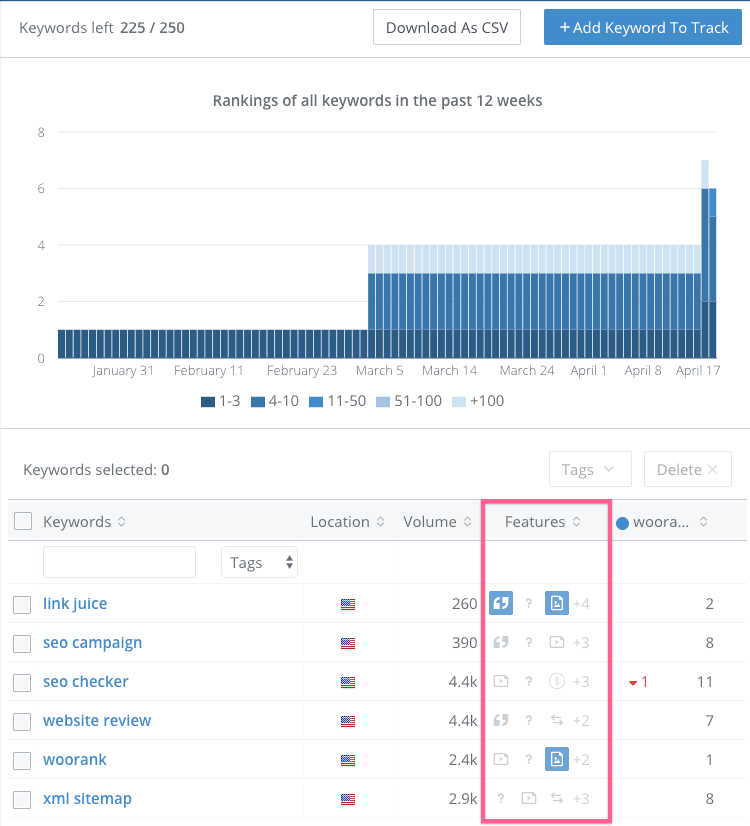
It also gives you the domain for the page appearing in the featured snippet:
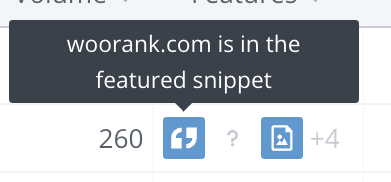
Users can also see the individual URLs appearing in the featured snippet:
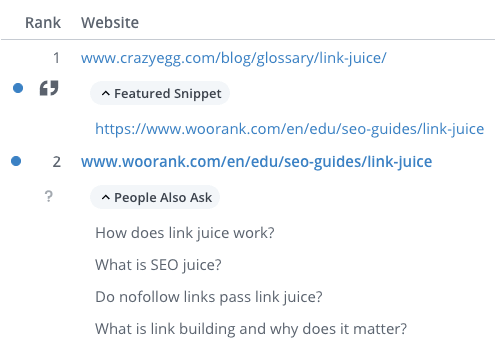
This data also includes the featured snippets for up to 3 of your competitors, giving you a full view of how your site is performing in search results.
Conclusion
After reading this post, you should have a good understanding of how to take advantage of Google’s featured snippets for SEO.
In a nutshell, the search results for Google’s featured snippets appear above position number one – we call this position zero!
It’s proven that sites with featured snippets ranking in position zero have a higher CTR (click-through rate) and as a result, gain an explosive amount of traffic.
While it does take a fair amount of work to earn your spot in position zero, the benefits to ranking in this position certainly outweigh the hard work!
We hope you enjoyed this post! If you have any additional tricks or tips to rank in above position one with Google’s featured snippets, feel free to share them in the comments!
Want an Easier Way to Get Leads?
We certainly encourage you take advantage of featured snippets. However, let’s fact it, it’s getting more and more difficult to rank at the top of Google. Ask us about our ‘pay-per-lead’ service and let us do the grunt work for you. We use modern day technology to generate highly qualified sales leads in real time. To learn more, click the link below.




Comments are closed.